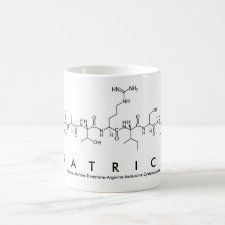
Authors: Stilman W, Yongabi D, Bakhshi Sichani S, Thesseling F, Deschaume O, Putzeys T, Pinto TC, Verstrepen K, Bartic C, Wübbenhorst M, Heyndrickx M, Wagner P
Article Title: Detection of yeast strains by combining surface-imprinted polymers with impedance-based readout.
Publication date: 2021
Journal: Sensors and Actuators B: Chemical
Volume: 340
Article Number: 129917.
DOI: 10.1016/j.snb.2021.129917
Alternative URL: https://www.sciencedirect.com/science/article/pii/S092540052100486X
Abstract: In this work, we present a new technique for the sensitive and facile detection of Saccharomyces strains with a detection limit of 30 cells/mL in both buffer solution and food samples such as beer and yoghurt. This is achieved by combining ultrathin surface-imprinted polymer (SIP) layers as receptors with impedance spectroscopy as the readout principle. Binding of cells to the imprinted polymer surface results in a concentration-dependent increase of the impedance signal. According to the equivalent-circuit modelling of the impedance spectra, this is due to an increase of the resistive component of the solid-liquid interface while capacitive effects are negligible. Regarding selectivity, we prepared imprints with three different template strains and compared the sensor response for using the same three strains as targets. The response is strongest for combinations in which templates and targets belong to the same strain. For other situations, the sensor signal is reduced by a factor of three, indicating a certain level of selectivity, which can be interpreted in terms of size and cell wall differences. In summary, the combination of SIP-type receptors with impedance spectroscopy offers a fast and sensitive technique for on-site analysis of complex food matrices outside a laboratory environment. The results for yeast should be transferable to other microorganisms, including pathogenic ones
Template and target information: yeast, Saccharomyces
Author keywords: Yeast strains, Food quality, biomimetic sensors, synthetic receptors, Surface-imprinted polymers, impedance spectroscopy



Join the Society for Molecular Imprinting

New items RSS feed
Sign-up for e-mail updates:
Choose between receiving an occasional newsletter or more frequent e-mail alerts.
Click here to go to the sign-up page.
Is your name elemental or peptidic? Enter your name and find out by clicking either of the buttons below!
Other products you may like:
 MIPdatabase
MIPdatabase









